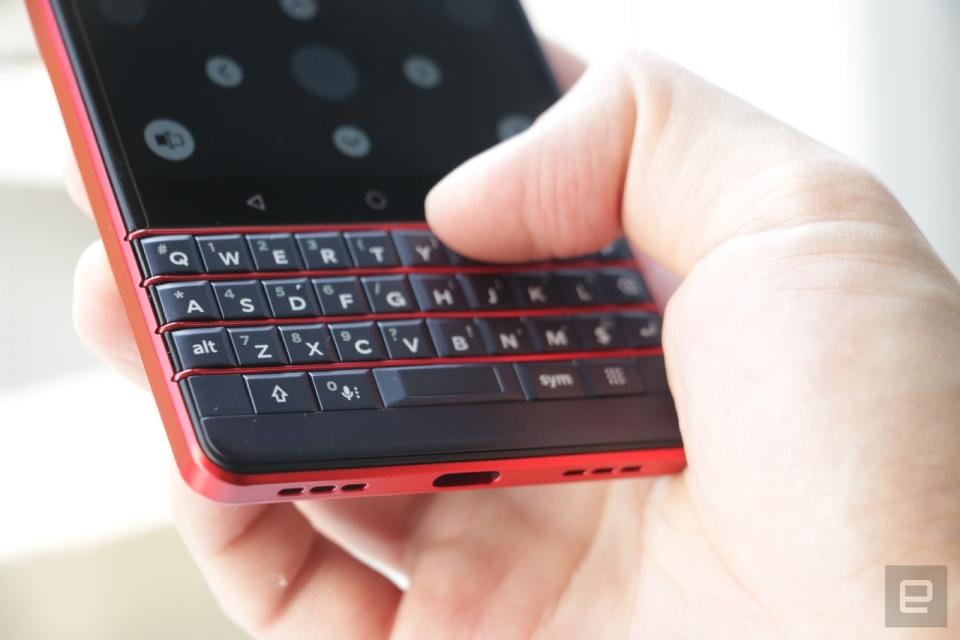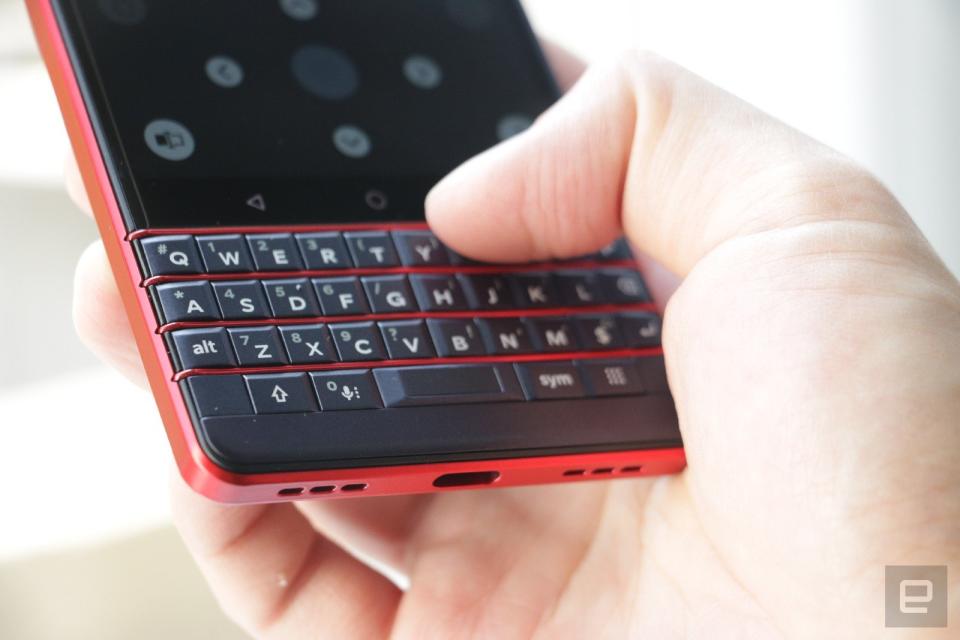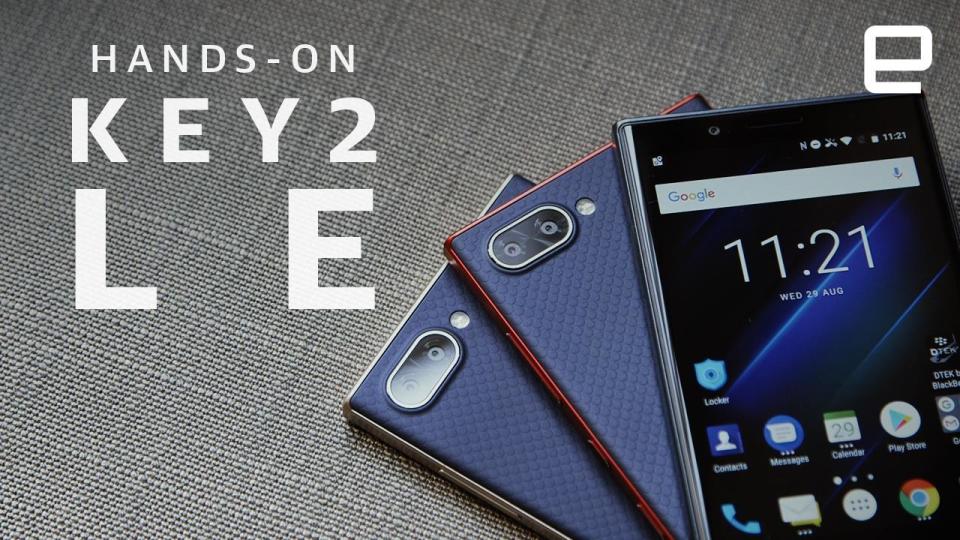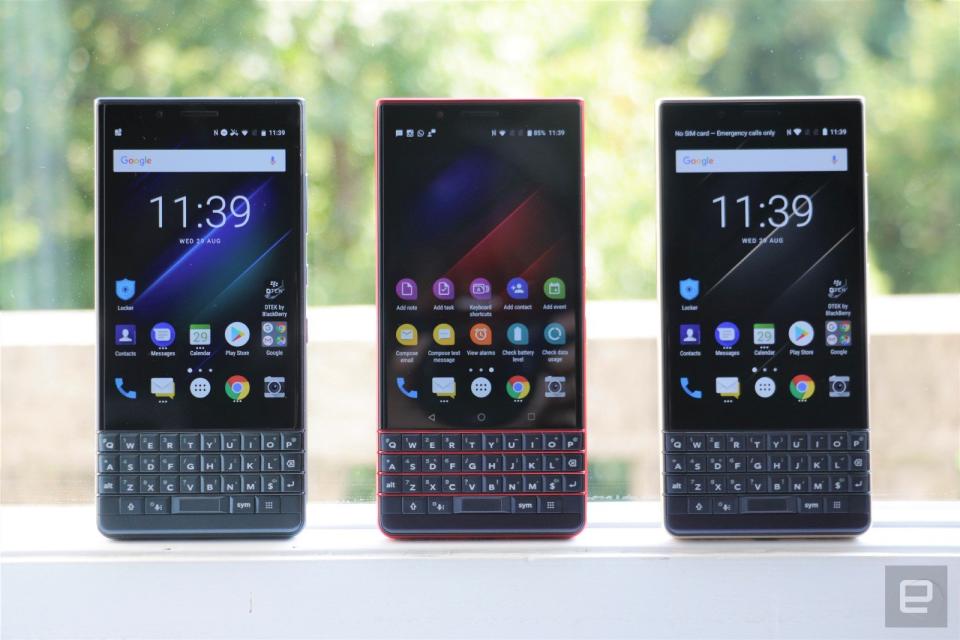BlackBerry’s KEY2 LE is cheaper, brighter but watered down
Think of it as a “Lite” version of the original KEY2.
It's barely been three months since BlackBerry (rather, TCL Communications) launched the KEY2, and the company is already ready to unveil a new variant here at IFA 2018. "It was always our intention to bring two variants of the KEY2 line," a spokesperson told Engadget. The KEY2 LE is a "more accessible" version of the original, with a thinner, less-boxy design and bolder color options. It's also $200 cheaper than the KEY2, but that obviously comes with some trade-offs.
By the way, no one will tell me what LE stands for, so I'm going to go with Lite Edition.
The clearest difference here are the color options. Though the Slate (bluish black) and Champagne (gold) variants aren't new in the industry, they still look nice on the KEY2. An eye-catching red version (which BlackBerry named Atomic) is easily the most Ferrari-esque of the trio, and will appeal to folks who want their phones to stand out. I like the red one most, since it's the only one that has a contrasting color on the keyboard's frets.
Although it's made of polycarbonate (versus the original's metal), the KEY2 LE still felt sturdy, and was comfortable to hold thanks to its thinner profile and curved sides. The physical keys are slightly smaller than the KEY2's, but the LE's keyboard still doesn't feel cramped -- the buttons are actually 10 percent bigger than on last year's KEYone. I actually found it easier to type on the LE, which I suspect has something to do with the thinner frame.
The other changes are trade-offs you'll have to live with for the $200 savings. The keyboard is not touch-sensitive, so you can't swipe on it to scroll through apps lists or flick up to select a predictive typing suggestion. The LE still has a dual camera system on the rear, but uses lower-tier components, though BlackBerry hasn't specified the exact differences.
Instead of the KEY2's Snapdragon 660 processor, the LE comes with a less powerful Snapdragon 636. The new handset also has just 4GB of RAM and smaller storage options (32GB and 64GB), as well as a 3,000mAh battery compared to the original's 3,500mAh cell. To make up for that, BlackBerry added some new software features to make sure you don't run out of juice, but more on that later.

Basically everything else on the KEY2 LE is the same as its more-premium brother -- it has an identical full HD display, the exact physical buttons on the edge and the Speed key that let you access all your keyboard shortcuts from any app.
BlackBerry did add some software updates, though. Before, the convenience key could be programmed to launch specific shortcuts based on where you are. If you're connected to your car's Bluetooth, for example, it'll switch to Car mode and use the shortcuts you've set for that profile. Connect to your home WiFi network, and it'll move to Home mode and the convenience key will launch the actions you've mapped for that context.
With the KEY2 LE, you can also set the convenience key to always launch the Google Assistant (or Google Lens when you long-press), regardless of where you are. It's nice if you rely on the digital helper a lot.
If you want to keep work and personal accounts on the same phone, but want to keep their contents separate, you'll like phone's the ability to clone apps in order to run multiple profiles. So far, the options available are just Instagram (where you can already run multiple profiles), Facebook Messenger, WhatsApp and WeChat, and you'll need to use dual SIM phones to run accounts simultaneously for the latter two. Hold down on the app's icon on the KEY2, then drag it over to the Clone option that appears at the top of the screen. A twin will show up next to it in your app drawer, and you can choose to hide the version with your personal profile, for instance, in a private vault.

Finally, like I mentioned before, BlackBerry incorporated more battery-boosting software tweaks, although they don't really extend battery life. The KEY2 remembered when you tend to recharge your phone, and reminded you to plug it in if you seemed to have forgotten. On the LE, BlackBerry goes a step further. When it sees that your calendar is full of appointments during the day and notices that you have a free window, it'll suggest that you charge your phone at that time to avoid running out of juice later. The company plans to expand these features over time. They're helpful, but ultimately are more like reminders to keep your KEY2 LE charged than anything that actually enhances battery performance.
Plus, companies like Google and Huawei have already trumpeted similar methods, using "adaptive battery" and AI-based power management features respectively to make phones last longer. There hasn't been significant evidence (yet) that such software tweaks really do work, so BlackBerry's new features are hard to get excited about. A smaller battery, though, is clearly a smaller battery.
Aside from these changes, the KEY2 LE has basically the same software as the regular, though I wouldn't be surprised if BlackBerry eventually brought the new features to the original KEY2.
The KEY2 LE is an obvious example of BlackBerry's efforts to reach a wider audience, and with the significantly lower price of $449, it might actually attain that goal. I'm not sure that the trade-offs will please these folks. So far, though, the refined design and colorful new looks might be enough to pique the public's interest, though retaining it will depend on reasons beyond the cosmetic.
Follow all the latest news from IFA 2018 here!
























